v1.0.48 Laubwerk Plants Kit 6 – Temperate Deciduous Trees
EDIT in Admin Edit in WP
Downloads
Download demos and trial versions, product documentation, free presets and more.
You may download a free Demo after logging in.
Temperate Deciduous Trees
A selection of both popular and distinctive temperate deciduous tree species planted in parks, gardens, or streets including excellent specimen trees with wonderful floral display such as Norbert’s magnolia, Japanese maple with beautiful autumn color, and the dark red leaved trees such as copper beech or black cherry plum. 10 broadleaf tree species of Laubwerk Plants in 3 variants, 3 ages and 4 seasons each, for architects and CG artists working in 3ds Max, Cinema 4D, or Trimble SketchUp.
3D Plants for CG Artists
Laubwerk offers easy-to-use software extensions for architects and CG artists looking for authentic 3D plants, and plant scattering tools.
With drag-and-drop simplicity, and easy-to-use tools that modify the shape, age, season and level of detail for each of Laubwerk’s stunning 3D plants, users can seamlessly add 3D trees to any CG project. For Autodesk 3ds Max & Maya, MAXON Cinema 4D, Trimble SketchUp, and Python.
TEMPERATE DECIDUOUS TREES
The following 10 tree species are included in the Plants Kit 6. Each species comes in 36 variations per species, i.e. 3 variants, 3 ages and 4 seasonal aspects, for a total of 360 models per Kit.
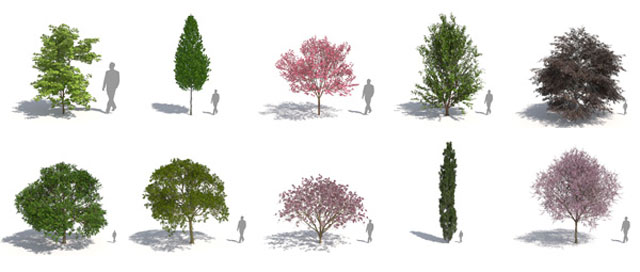
- Japanese maple (Acer palmatum)
- pyramidal European hornbeam (Carpinus betulus ‘Fastigiata’)
- pink-flowering dogwood (Cornus florida var. rubra)
- de Vilmorin handkerchief tree (Davidia involucrata var. vilmoriniana)
- copper beech (Fagus sylvatica ‘Atropunicea’)
- European ash (Fraxinus excelsior)
- honey locust ‘Sunburst’ (Gleditsia triacanthos var. inermis ‘Sunburst’)
- Norbert’s magnolia (Magnolia x soulangeana ‘Norbertii’)
- Lombardy poplar (Populus nigra ‘Italica’)
- black cherry plum ‘Nigra’ (Prunus cerasifera ‘Nigra’)
INCLUDES 360 MODELS
All Laubwerk Plants in this Kit come in 36 variations per species, i.e. 3 variants, 3 ages and 4 seasons. Here are a few examples of the variety:
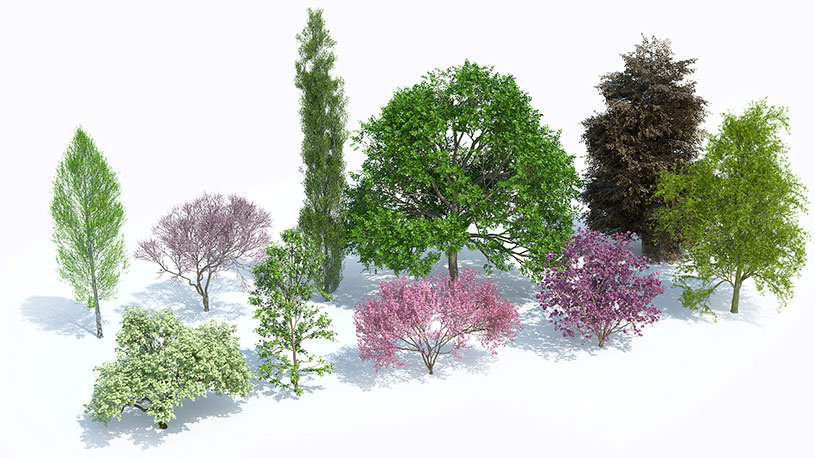
Spring & summer: 10 out of 360 temperate deciduous tree models of Laubwerk Plants Kit 6.
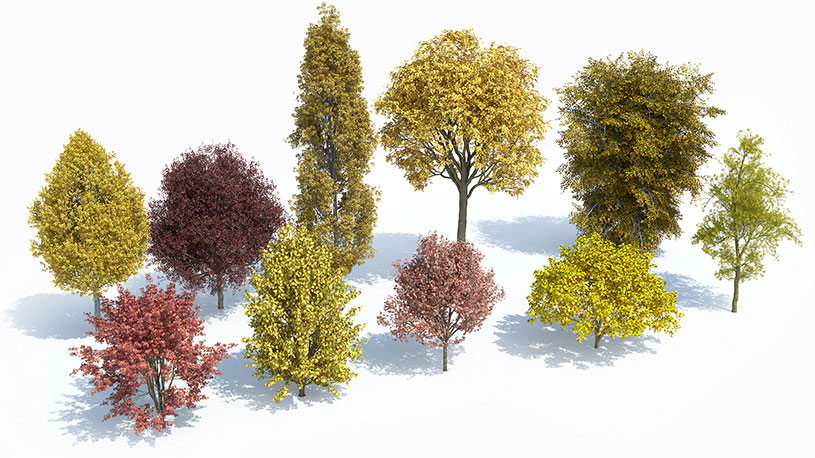
Autumn: 10 out of 360 temperate deciduous tree models of Laubwerk Plants Kit 6.
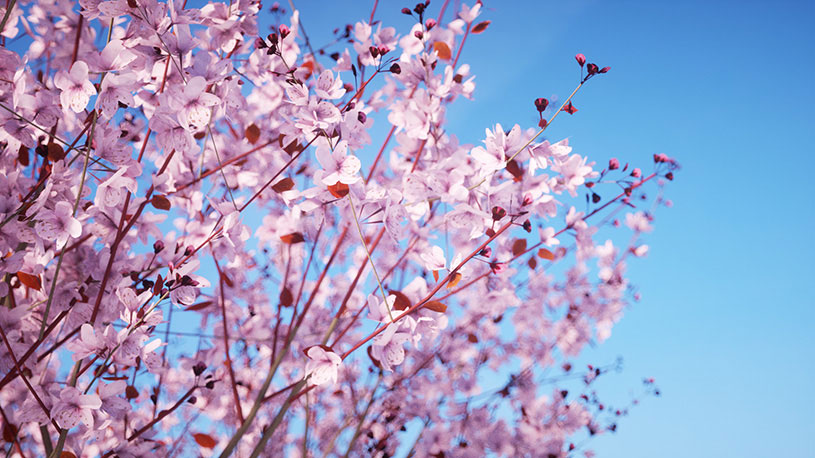
Black cherry plum in full bloom (rendering by Mario Kelterbaum using CINEMA 4D and Otoy OctaneRender).
Includes Free Laubwerk Player
The free Laubwerk Player plugin comes bundled with each of the Laubwerk Plants Kits.
Use the Laubwerk Player to easily load and control plant models inside Autodesk 3ds Max & Maya, MAXON Cinema 4D, and Trimble SketchUp. Just drag-and-drop your 3D tree, set the shape, age, and season and level of detail control. Watch the lightning fast rendering with inbuilt and 3rd parts renderer support.
Laubwerk Player Plugin
Inserting, controlling and rendering great-looking 3D tree models has never been easier with the Laubwerk Player plugin! The Laubwerk Player provides immediate visual access to your Laubwerk plant library. You get multiple drawing options in the viewport (like simple hull shape or skeleton) for quick feedback and low memory usage while editing your scene. And when you’re satisfied, watch the Laubwerk Player dynamically render fully-detailed plant models at amazing speeds, with automatic default materials and level of detail.
Plant Library Browser
The Plant Library Browser appears right in the 3ds Max, Maya, Cinema 4D or SketchUp main menu and provides direct access to the Laubwerk Plants installed on your computer. Drag-and-drop your 3D tree species into your scene or replace existing trees. Loading the plants through the Plant Library Browser directly creates materials with basic shading and textures preassigned, saving you time and memory while you work.
Plant Object
The Plant Object represents a Laubwerk plant model in your scene by using low-memory hull or skeleton mode for easy placement. It dynamically loads the model’s age and shape that you chose, creating a simple viewport approximation that allows you to apply model alterations and adjust level of detail settings. Laubwerk Plant Objects are fully scriptable using MaxScript.
V-Ray Support
Dedicated support of V-Ray saves you time and memory. Instead of manually converting Laubwerk Plant Objects into V-Ray proxies, the Plant Object detects when V-Ray is used for rendering and dynamically creates the model’s geometry during rendering. This is the exact same process V-Ray uses for V-Ray proxies, just automatically applied without any manual setup.
Renderer Support
Materials and textures are created on the fly – for the built-in renderer or third-party renderers.
- For 3ds Max, Maya, and Cinema 4D: mental ray, iray, Maxwell Render, Thea Render, Arnold, OctaneRender, Corona Renderer and Redshift.
- For SketchUp: V-Ray for SketchUp and Thea Render for SketchUp.
Laubwerk Advantage
- Plug and Play – One-click solution for architects and CG artists who need realistic 3D trees, immediately.
- Fast and Fluent – Render-ready 3D trees minimize the need for finetuning that can otherwise interrupt your workflow.
- Easy and Integrated – Drag-and-drop plants inside 3ds Max & Maya, and MAXON Cinema 4D, or Trimble SketchUp.
- Intuitive – Simple settings are a mouse click away.
- Smart Content – Go beyond static models! Choose the shape, age, season and detail of each tree.
- High Tech – Laubwerk technology minimizes the usual compromise between high-quality graphics and efficient memory usage.
Realistic 3D Tree Models
Laubwerk uses a hybrid of procedural modeling and hand-detailing by botanist and 3D artists to make the most realistic CG trees.
- Render-ready materials and textures are created on the fly – for the built-in renderer (3ds Max, Maya & Cinema 4D), or third-party renderers such as V-Ray, mental ray, iray, Maxwell Render, Thea Render, Arnold, OctaneRender, and Corona Renderer.
- Leaves consist of more than just a single polygon, so they bend and catch highlights.
- Textures are based on high quality photos from real trees.
- Models maintain shape and density, regardless of detail level.
Description
 JAPANESE MAPLE
JAPANESE MAPLE
Acer palmatum
Deciduous small tree or shrub with a variable, bushy habit often with low branching. Dark brown, smooth bark becomes light gray when the tree matures. Small, deeply 5 to 7-lobed leaves often colouring well in autumn including shades of yellow, red-purple and bronze. Small red flowers in spring are followed by red or green winged samaras in pairs. Japanese maples are generally grown for their attractive foliage and shape.
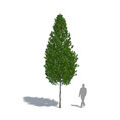 PYRAMIDAL EUROPEAN HORNBEAM
PYRAMIDAL EUROPEAN HORNBEAM
Carpinus betulus ‘Fastigiata’
Medium-sized deciduous tree with a very compact and densely branched crown and a narrow, columnar form in youth, which gradually acquires a tear drop or oval-vase shape with age. Smooth, grey, rippling bark with distinctive muscle-like texture. Ovate, serrate, fresh green leaves are clean and attractive throughout the growing season turning golden yellow in autumn. Its small crown makes it very suitable as a street tree but also as a park and garden tree.
 PINK-FLOWERING DOGWOOD
PINK-FLOWERING DOGWOOD
Cornus florida var. rubra
Attractive small deciduous tree or large shrub with with a low-branching, broadly-pyramidal but somewhat flat-topped habit and wide-spreading form. Warty gray alligator bark on mature trees. Oval, dark green opposite leaves with arcuate venation turn attractive shades of intensive red in fall. Large, very showy flowers consist of four showy, pink to reddish pink, petal-like bracts with yellowish-green centers. Produces red berries from early to late fall. One of the most beautiful of the native North American flowering trees with outstanding ornamental features.
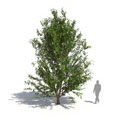 DE VILMORIN HANDKERCHIEF TREE
DE VILMORIN HANDKERCHIEF TREE
Davidia involucrata var. vilmoriniana
Medium-sized deciduous tree with a broad oval to pyramidal habit and scaly bark. Bright green, broadly ovate, alternate leaves, which might turn a beautiful yellow in autumn. Small, dark green flower-clusters each subtended by a pair of creamy-white, ovate bracts, which are said to resemble dangling handkerchiefs or doves resting on the branches. Ovoid greenish-brown fruits. Named after French missionary and naturalist Father Armand David, who was also the first westerner to describe the giant panda. This prized ornamental tree with its striking display of floral bracts in late spring was once considered to be the Holy Grail of exotic flora. It holds an Award of Garden Merit from the British Royal Horticulture Society.
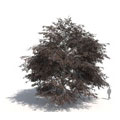 COPPER BEECH
COPPER BEECH
Fagus sylvatica ‘Atropunicea’
Large deciduous tree with a conical, pyramidal to rounded habit and a usually low canopy. Attractive light or dark gray, smooth bark. Elliptic to ovate, glossy, smooth, alternate leaves. In spring, eye-catching foliage ermerges in copper red, which will fade to deep crimson maroon purple as the summer progresses, turning deep orange to copper in autumn. Although deciduous the leaves generally stay on the tree well into winter. The ornamental tree makes one of the finest specimens for large scale, temperate landscapes, perfect for giving contrast to an otherwise green landscape.
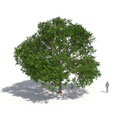 EUROPEAN ASH
EUROPEAN ASH
Fraxinus excelsior
One of Europe’s largest native deciduous trees with a broad, rounded, spreading habit. Smooth bark on young trees, becoming thick and vertically fissured on old trees. Large, dark green leaves are pinnately compound, divided into pairs of lance-shaped leaflets, tipped by a single one, which creates a light feathery arrangement to the foliage. Leaves are often among the last to open in spring, and the first to fall in autumn often in dull green if an early frost strikes. Occasionally with an attractive green golden to yellow autumn color.
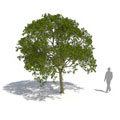 HONEY LOCUST ‘SUNBURST’
HONEY LOCUST ‘SUNBURST’
Gleditsia triacanthos var. inermis ‘Sunburst’
Elegant, small deciduous tree with an irregular, erect or vase-shaped form and a loosely conical to broadly asymmetrical crown. Thornless trunk with dark gray or black bark, smooth on young trees, becoming stringy and vertically fissured on old trees. Bipinnately compound leaves with small leaflets, initially light green to bright golden-yellow, gradually changing to bright green in summer, then back to golden-yellow again in autumn. Inconspicuous flowers. Fruitless. A hardy and good lawn tree with finely textured foliage, that drops leaves early, leafs out late, and produces filtered shade.
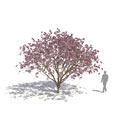 NORBERT’S MAGNOLIA
NORBERT’S MAGNOLIA
Magnolia x soulangeana ‘Norbertii’
Select deciduous small, short-stem tree, initially funnel-shaped, upright, later expansive and broad, rounded habit. Smooth grey bark with coarse texture. Obovate, alternate, stout, fresh green leaves, turning pale yellow in autumn. Large and stout pink to purple from outside, white from inside, tulip-shaped flowers emerge in an abundance on bare wood in mid spring. The magnolia, a hybrid created by man, makes a wonderful floral display, filling the air with a pleasant aromatic fragrance.
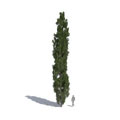 LOMBARDY POPLAR
LOMBARDY POPLAR
Populus nigra ‘Italica’
Large, vigorous, narrowly columnar deciduous tree with erect habit. The bark is grey or light green on young trees and new growth, but becomes dark grey, thickened, and ridged or furrowed on older, larger trunks. Ovate to rhomboidal bright green leaves, turning a bright golden yellow in fall before dropping. Propagation is by cuttings since this cultivar is a male clone.
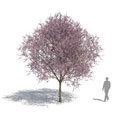 BLACK CHERRY PLUM ‘NIGRA’
BLACK CHERRY PLUM ‘NIGRA’
Prunus cerasifera ‘Nigra’
Small, deciduous, upright tree with a rounded to pyramidal habit. Dark brown, furrowed bark. Deep blackish-purple leaves. Solitary, bowl-shaped, pale pink flowers are showy, and fragrant and open from deep pink buds before the leaves. These are followed in autumn by edible, dark red and spherical fruits. This cultivar, originating from the USA, has gained the Royal Horticultural Society’s Award of Garden Merit.
System Requirements
Computer Hardware | A computer that is capable of running your version(s) of 3ds Max, Maya, Cinema 4D, SketchUp. |
|---|---|
Hard Disk Space | 10MB of hard disk space and additional space for the Laubwerk Plants models. |
Supported Hosts |
|
Installation Instructions | Our aim is to make the installation process as easy as possible for you. If you like to get more information, we have compiled these Laubwerk Plants Kits installation instructions, including advanced topics such as considerations when working in a network. |
Change Log
Update 1.0.49 (April 5, 2024)
Update 1.0.48 (December 22, 2023)
Update 1.0.47 (November 15, 2023)
Update 1.0.46 (July 17, 2023)
Update 1.0.45 (June 19, 2023)Maya
3ds Max
Cinema 4D
|
FAQs
Tutorials

A Guide to Realistic Digital Vegetation Creation for 3D Landscapes
Creating immersive, realistic vegetation is an art form in itself. Learn about tools and libraries to help you create realistic vegetation.
More...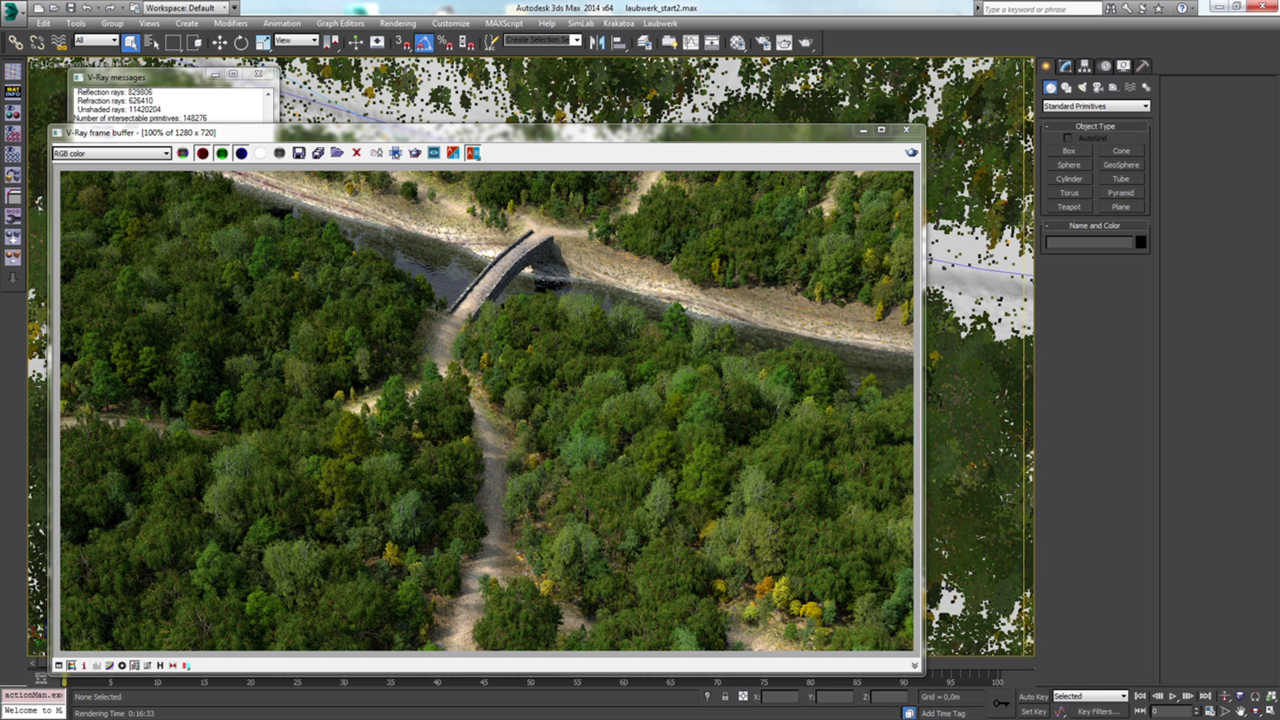
Laubwerk Plants integration with iToo Forest Pack
Learn how to use Forest Pack to instantly create stunning CG forest scenes using Laubwerk's line of beautiful, render-ready 3D tree species, inside Autodesk 3ds Max.
More...








